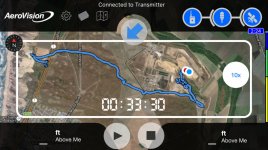Kiwibird
Well-known member
- Jul 12, 2012
- 9,539
- 111
- Parrots
- 1 BFA- Kiwi. Hatch circa 98', forever home with us Dec. 08'
In the Maggie thread a member had brought up GPS devices are available that would work for parrots, but unless I totally missed it, I never saw the separate thread for it. I was totally confused on how it would work. Given it's getting to be summer again and a greater potential for loss, I thought we should get this discussion going. I can't be the only one interested in a GPS tracker for my bird! Does anyone currently have one? Or maybe we can put our collective minds together and figure out a little more about what options are available! Let's discuss....






